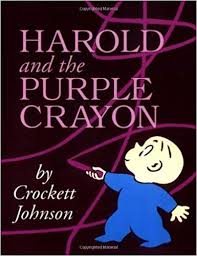We had a good drop of snow the other night; the best we’ve had since the new year began. The flakes fell quickly, adding inches to the front porch and everything in the yard beyond. As I surveyed the vast, white blanket before me, my mind wandered to snow angels and snowmen, to pulling the sled out of the garage. I pictured wandering lines of deep footprints, far as the eye could see, or snowballs piled up and ready, waiting for a battle with the neighborhood kids. Without knowing it, I was effectively ticking the list of images from Ezra Jack Keats’ 1962 children’s classic, “The Snowy Day”.

Confession time. I didn’t remember the story of “The Snowy Day” until I stopped by my local bookstore the other day for a copy (destined to my granddaughter’s bookshelf). It’s a simple book: the snow-filled adventures of a little boy on a winter’s day, captured in less than two hundred words. The images tell the story as well as the words, including the boy’s disappointment when he realizes a snowball carefully packed into his coat pocket melted moments after entering the warmth of his house.

Why all the fuss over a short children’s story, authored almost sixty years ago? Consider this: “The Snowy Day” is the most checked-out book in the 125-year history of the New York Public Library (NYPL). That’s 485,583 individual borrows, putting the book comfortably ahead of hundreds of thousands of others. (Safe to say the “Jeopardy” writers jotted down that bit of trivia for future use.)
You’d think I’d have checked out “The Snowy Day” when I was little. After all, the library was a weekly – if not bi-weekly destination as a kid. My older brothers took music lessons right across the street, leaving the library as a convenient “babysitter” while Mom went to the grocery store. I’ll always be grateful to her for that strategy, which generated countless check-outs and a lifetime love of reading.

I find it remarkable the NYPL maintains complete records – most of them on paper – backing up its check-out claim for “The Snowy Day”. The book topped several other bestsellers I would’ve chosen instead. Take “Fahrenheit 451” (#7 all-time checked-out), or “Harry Potter and the Sorcerer’s Stone” (#9). How about other children’s titles like “The Cat in the Hat” (#2) and “Where the Wild Things Are” (#4)? “The Snowy Day” sits atop the list with fewer words and fewer pages (except perhaps #10, “The Very Hungry Caterpillar”) Good on you, Ezra Jack Keats.
Dale Carnegie’s “How to Win Friends and Influence People” seems out of place in the NYPL top-ten (#8) – the only non-fiction read on the list. I’ve never checked out a Carnegie self-help book, let alone bought one (not that I couldn’t use the help). For that matter, I’ve never checked out any of the NYPL top-ten. Maybe #6 Charlotte’s Web, but that was a long time ago.
“The Snowy Day” brought to mind storybooks from my own childhood, I took a few minutes to recall the following favorites (sans Google search):



- Harold and the Purple Crayon
- Clifford the Big Red Dog
- The Red Balloon
- Make Way for Ducklings
- Blueberries for Sal
- Mike Mulligan’s Steam Shovel
- Are You My Mother?
- Sparky’s Magic Piano
- Caps for Sale
The brain is remarkable. I can give you a complete synopsis of each of the above stories, fifty years after I first read them. Furthermore, “Harold and the Purple Crayon” and “The Red Balloon” manage to tell their stories without a single word. Nothing but photos and illustrations. They make “The Snowy Day” look like a novel.

I can’t tell you the last time I set foot in a library, but I know it’s been years. I’d say I’m “overdue” and should “check out” one of the nearby branches. After all, the stories of my childhood have endured the test of time, waiting patiently on the shelves; perfect reads for the next “snowy day”.
Some content sourced from the 1/13/2020 Wall Street Journal article, “These Are the Most Frequently Checked-Out Books in the History of the New York Public Library“.

